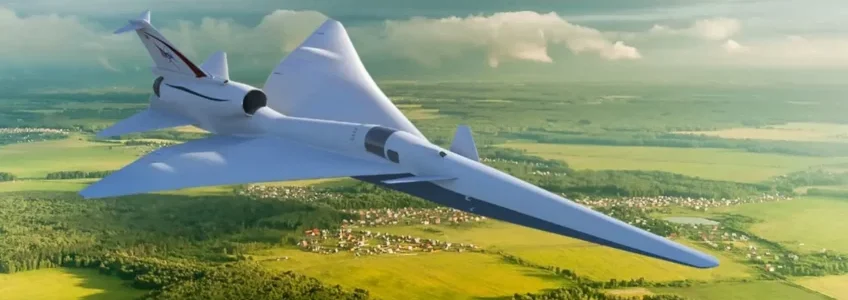The dawn of a new era in aviation is on the horizon. One that promises the thrills of supersonic flight, but without those deafening sonic booms. How, you ask? Enter the X-59 QueSST supersonic jet, an experimental marvel from NASA.
A clear, sunny day might seem like perfect flying conditions, but as temperatures continue to rise globally, the aviation industry is being forced to confront a new challenge: heatwaves. Soaring temperatures might feel nice on a beach, but they can present complex issues for aircraft. Let’s take a closer look at why this happens and some potential solutions to counter the effects of heatwaves.
The aerospace manufacturing industry relies heavily on precision engineering to create intricate and reliable components and systems vital for the safe and efficient functioning of aircraft. This process involves design, development, manufacturing and testing of high-quality products. In this article, we will discuss the role of precision engineering in aerospace manufacturing and explore how it contributes to the development of advanced aerospace technologies.
British aerospace giant Rolls-Royce and Air China are entering into a new Joint Venture to build a maintenance, repair and overhaul (MRO) facility. The new facility, Beijing Aero Engine Services Company Limited, will provide essential MRO support on several engines. This Joint Venture between Rolls-Royce and Air China is a result of the United States increasingly implementing export restrictions on advanced technology and limited international travel.
With a continued focus on decarbonising the aviation sector using sustainable aviation fuels and battery tech, how close are we to hybrid-electric flight?
Since air traffic is set to increase 5% every year until 2030, it’s not surprising that more companies are looking for ways to make aircraft more sustainable. Rolls-Royce, the world’s second-largest aircraft engine manufacturer, has joined the fray by revealing its new turbogenerator.
CNC Milling Machines are used to shape metal and other solid materials using specialised cutting tools programmed and managed by Computer Numerical Control (CNC) systems. The machining process creates a specific part or product with the help of CAD software, short for Computer-Aided Design.
Today, you won’t find many items that haven’t gone through CNC milling machines as most sectors rely on this specialised process. Some examples are cars, aeroplanes, machine parts, moulds for household machines, toys and even prosthetics. All of these are likely to have one or several CNC-machined components.
With all the talk about more sustainability in the aviation sector, it turns out old cooking oil could power the world’s largest passenger airliner. That is exactly what happened on the 28th of March 2022 when an Airbus A380 performed a first flight powered by 100% sustainable fuel.
In a collaborative effort between the United Kingdom and France, the Concorde was born. It was the world’s first supersonic commercial aircraft which was a cut above the rest and, perhaps, a few decades before its time. Having invested so much in building this revolutionary supersonic commercial aircraft, why did the Concorde fail?
With all the hype around sustainability and decarbonisation in the transportation sector, everything is pointing to achieving net-zero. However, it’s not an easy feat since there are many moving parts but there are some fascinating aviation innovations that could turn the industry on its head.
The new Boeing hypersonic aircraft concept could be a spiritual successor to the Mach 3 SR-71 Blackbird. At the AIAA SciTech aerospace forum, Boeing presented an artist’s rendering of the hypersonic aircraft concept delta-wing jet where it received a lot of attention.











Recent Comments